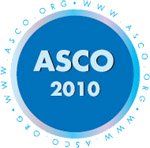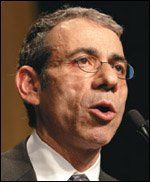Eribulin amplifies survival in pretreated metastatic breast cancer patients
If approved, oncologists will have a new therapeutic option with proven benefits, acceptable toxicity, said EMBRACE trial leader.
ABSTRACT: If approved, oncologists will have a new therapeutic option with proven benefits, acceptable toxicity, said EMBRACE trial leader.

There is new hope for women with locally recurrent or metastatic breast cancer who fail conventional therapies. In the phase III EMBRACE study, eribulin mesylate (E7389) improved overall median survival by 23%, compared with conventional treatment.
"There previously was no accepted single treatment of women with heavily pretreated metastatic breast cancer and no prior studies showing a survival benefit," said lead investigator Christopher Twelves, MD, professor of clinical pharmacology and oncology, and head of the Clinical Cancer Research Groups at the University of Leeds & St. James's Institute of Oncology in the UK. Now, "if or when approved, practicing oncologists will have a therapeutic option with proven benefit and acceptable toxicity to offer these women for whom there were previously no options," he added.

©ASCO/Todd Buchanan 2010 "If approved, practicing oncologists will have a new therapeutic option with proven benefit and acceptable toxicity." - CHRISTOPHER TWELVES, MD
TABLE 1 EMBRACE trial Rx arms Arm I: Eribulin at 1.4 mg/m
2
over 2-5 minutes by IV on days 1 and 8 of a 21-day cycle in 508 patients
Arm II: Treatment of physician's choice (TPC) in 254 patients
The FDA recently granted eribulin (see Fact box) priority review for the treatment of women with locally advanced or metastatic breast cancer who have been previously treated with two different types of chemotherapy drugs. The FDA review will be based on the results of the global trial, which randomized 762 patients with advanced breast cancer to two treatment arms (see Table 1).
Study looks at eribulin combo and dosing
A phase I dosing study sought to establish the maximum tolerated dose (MTD) for eribulin in combination with carboplatin. Patients with advanced solid tumors whose prior standard therapy failed were enrolled. The investigators studied three different combinations and found that eribulin mesylate at 1.1 mg/m2 plus carboplatin (AUC 6) offered the MTD with dose-limiting toxicities of febrile neutropenia and/or neutropenia. An extension arm with this combination is currently enrolling patients with chemotherapy-naive, advanced non-small-cell lung cancer (ASCO 2010 abstract 2589).
Patients receiving treatment of physician's choice (TPC) were allowed to receive any single-agent chemotherapy, hormonal therapy, or biologic therapy approved for the treatment of cancer or supportive care only. The majority of these patients (96%) received chemotherapy including vinorelbine (Navelbine), gemcitabine (Gemzar), capecitabine (Xeloda), taxanes, anthracyclines, or other chemotherapy drugs. The remainder received hormonal therapy. No patients received biologic agents or best supportive care only (ASCO 2010 abstract CRA1004; Clin Breast Cancer 10:160-163, 2010).
All patients in the study had locally recurrent or metastatic breast cancer and had undergone two to five prior chemotherapy regimens for advanced disease that included the use of an 'anthracycline and a taxane. Patients also had to have disease progression within six months or less of the last chemotherapy treatment; neuropathy, if any, less than grade 2; and Eastern Cooperative Oncology Group (ECOG) score ≤ 2. Patient and disease characteristics were similar between the two treatment groups (see Table 2).
FACT Mechanism of action Eribulin mesylate is a nontaxane microtubule dynamics inhibitor. The drug is a synthetic analog of halichondrin B, which was derived from a natural product isolated from the marine sponge Halichondria okadai.
Overall, patients treated with eribulin had a 19% reduction in the risk of death (hazard ratio [HR] 0.81; P = .04). Patients treated with eribulin survived a median of 2.47 months longer than the TPC patients (13.1 vs 10.6 months).
Dr. Twelves noted that eribulin also was associated with improvements in progression-free survival (PFS) and overall response rate (ORR). The median PFS was 3.7 months for eribulin vs 2.2 months for TPC, and ORR (complete and partial response) was 12.2% for eribulin vs 4.7% for TPC (P = .002).
TABLE 2 EMBRACE trial patient characteristics
Dr. Twelves reported that there was no excess of serious adverse events in the eribulin arm that resulted in interruption or discontinuation of treatment.
The main grade 3-4 treatment-related adverse events of interest in the eribulin arm were neutropenia (45%), peripheral neuropathy (8.2%), and asthenia/fatigue (8.8%).
Dr. Twelves emphasized that a detailed comparison of the adverse effects between the two treatment arms in this study is complicated by the different chemotherapy agents used in the TPC arm.
"Any trial design is a compromise. The advantage of reflecting normal practice outweighs the issues around not being able to compare individual toxicities," he said.
"The fact that there was no difference in the adverse events or serious adverse events reassures me that overall the burden of toxicity did not differ substantially between the two arms."
VANTAGE POINT

ERIC P. WINER, MD EMBRACE demonstrates novel survival difference
In this era of targeted therapies, eribulin may be one of the last chemotherapy agents developed for women with breast cancer that has a reasonable chance of being approved, said Dr. Winer.
"It is unusual to see a survival difference in studies like this in women with breast cancer," he said.
Dr. Winer is director of the Breast Oncology Center at Dana-Farber Cancer Center and a professor of medicine at Harvard Medical School, both in Boston.
"The fact that one was seen implies that the drug has a reasonable amount of activity. For some patients, this may translate into a far bigger difference than 2.5 months since this only reflects what was seen at the median."
Ultimately, a better understanding of who will and won't benefit from this agent is needed, Dr. Winer said. Another area that requires exploration is if eribulin can be used in combination with targeted therapies.